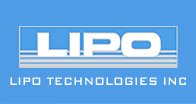There are many different ways to rupture our microcapsules and the following is a non-exhaustive list of examples of the most common methods of rupture:
- Mechanical Shear
- pH
- Temperature (Melting or Bursting due to internal pressure)
- Slow release over time
- Dissolution when a solvent/chemical is added
- Pressure
2. How do we know what the best microencapsulation system to use is?
That is where our expertise comes in to play. We will speak to you about your custom application and ask you some very specific questions about your expectations and desires and we will determine the best system for you to begin your evaluation. The first microcapsule sample we send you may not be exactly what you need, so we encourage open communication with our customers. We work the best when our customers offer us honest feedback and results from their testing so that we can determine how we can make adjustments on our end to find a solution for you.
3. Why would I want to use microencapsulation?
Each different type of microcapsule has its own properties which contribute to its benefits, limitations and advantages. In general, when a material has been microencapsulated it is to provide the following types of benefits:
- To provide oxidation stability
- To hold onto volatile materials
- To separate incompatible materials
- To convert a liquid to a solid
- To provide a targeted or sustained release of a substance
- To improve flow characteristics / Ease of use
- For functionality or for pure aesthetics
For more facts visit our Frequently Asked Questions section.

